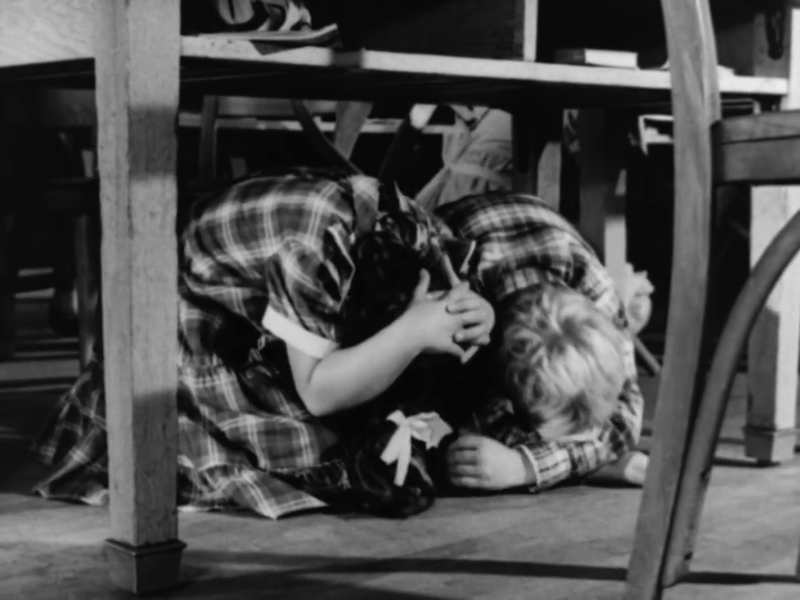
The Silent Suffering of Forgotten Communities
Trinity
MOVIE REVIEW
Trinity
-
Genre: Documentary
Year Released: 2025
Runtime: 1h 16m
Director(s): Martina Car, Anthony Audi
Where to Watch: Coming to streaming and DVD on February 18, 2025
RAVING REVIEW: TRINITY doesn't rely on spectacle or shock value. Instead, it turns its lens on voices long ignored—those quietly living with the consequences of a test that changed the world without their consent. This isn’t a project trying to retell history with rage. It’s trying to fill in the gaping silences. With a focus on lived experiences rather than dramatized recreations, the film unearths a complicated chapter of American history that is as under-discussed as it is hauntingly relevant.
Rather than opting for a linear timeline, TRINITY weaves together firsthand accounts and historical fragments in a way that often feels more impressionistic than narrative-driven. This approach mirrors the confusion, displacement, and disjointed responses of the communities it represents. It’s a film made up of moments—some piercing, some quiet, some frustratingly unclear—but moments that together reflect the long shadow cast by a single explosion in the desert.
Central to its core is the inclusion of interviewees like Phil Harrison, a Navajo man whose insights frame the events within generations of cultural suppression and systemic abuse. He doesn’t merely retell his own experience; he draws a line through history, from government-sanctioned relocations to language bans and unsafe uranium mining. His testimony, which arrives toward the latter part of the film, gives the project a much-needed spine. It’s a reminder that history isn’t just dates and events—it’s carried in the bodies and memories of those still living through its aftershocks.
Though the documentary wisely centers the voices of affected individuals, the lack of context from scientists, medical professionals, or historians makes the weight of their stories feel more anecdotal than undeniable. Including even brief insights from those with relevant credentials could have validated what these communities have long known—that their suffering isn’t hypothetical, and their health issues are tied directly to government actions and inaction.
The inclusion of footage from military leaders who later questioned the necessity of the nuclear attacks offers a sharp critique of the very foundation on which the test was built. Unfortunately, this footage comes too late in the documentary to shape the viewer’s perspective on the stories that preceded it. Starting with these insights would have primed audiences to question not just the consequences, but the motives and ethics behind the original test—and the silence that followed.
Where the film finds its footing is in its depiction of the ongoing fight for recognition. Activists like Tina Cordova of the Tularosa Basin Downwinders Consortium are given space to lay out the harsh reality: while many affected by nuclear testing elsewhere have received government compensation, New Mexicans, particularly those closest to the test site, have been left out. Their story is one of bureaucratic neglect as much as environmental devastation, and the documentary allows that injustice to speak loudly through the people who live with its consequences every day.
The voices featured aren’t dramatic or grandiose; they are steady, often soft, but resolute. There’s no grandiloquence, just decades of lived reality from people who’ve had to explain again and again why they matter. That quiet insistence is where TRINITY gains its emotional gravity. Even with the film’s structural imperfections, the interviewees bring authenticity and dignity that no camera trick could replace.
TRINITY ultimately works best when it leans into that simplicity—when it lets people talk, sit in their pain, and push for answers they may never get. It may not always land its narrative or visual choices, however, it offers something that’s still too rare: a seat at the table for those pushed to the sidelines of history.
And maybe that’s part of the point. These are incomplete stories, not because they were poorly told, but because they’ve never been finished. There’s no resolution, no justice delivered by the time the credits roll. The documentary doesn’t attempt to solve anything—it simply asks that we finally listen, and perhaps feel just uncomfortable enough to keep asking questions long after the screen goes dark.
Please visit https://linktr.ee/overlyhonestr for more reviews.
You can follow me on Letterboxd, Instagram, Twitter, and YouTube. My social media accounts can also be found on most platforms by searching Overly Honest Reviews.
I’m always happy to hear from my readers; please say hi or send me any questions about movies.
[photo courtesy of FIRST RUN FEATURES]
DISCLAIMER:
At Overly Honest Movie Reviews, we value honesty and transparency. Occasionally, we receive free items for review, including DVDs, Blu-rays, CDs, Vinyl, Books, etc. We assure you that these arrangements do not influence our reviews, as we are committed to providing unbiased and sincere evaluations. We aim to help you make informed entertainment choices regardless of our relationship with distributors or producers.
Amazon Affiliate Links:
Additionally, this site contains Amazon affiliate links. If you purchase through these links, we may receive a commission. This affiliate arrangement does not affect our commitment to honest reviews and helps support our site. We appreciate your trust and support in navigating these links.